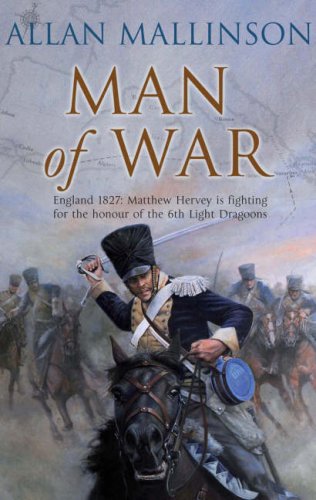Man of War
In 1827 the Battle of Trafalgar is twenty years in the past and the everlasting peace in Europe, which was to have been built on the victory, is now being overshadowed by the re-emergence of military might. This was also the period when slavery was being vigorously suppressed by the British.
Allan Mallinson’s Man of War is the ninth book in the series involving Matthew Hervey of the 6th Light Dragoons. I have not met the Major, now acting as Lieutenant-Colonel, since 1818 when as Captain Hervey he saw service in Canada. Nine years have passed and now on the brink of marriage for the second time he is in London recovering from malaria and wounds sustained in the Zulu wars. Having followed the drum at home and abroad for King and Country whilst fighting in the most significant battles of the early part of the 19th century, he is aware that times are changing and soldiering is not the refuge it once was.
For the reader who has not been closely involved in Hervey’s career, the events alluded to in the early chapters of this book may be confusing. The story falls into two parts, autumn 1827 and summer 1828, on land and sea. The author sets the period well but the cascade of cavalry terminology begs a glossary. In comparison, the warship which the brevet Colonel’s good friend, Captain Sir Laughton Peto, commands at the Battle of Navarino is convincingly described and supported by detailed line drawings.
The naval episodes are written with a certain amount of panache whilst the army manoeuvres seem muddled; you cannot wait to return to sea.










